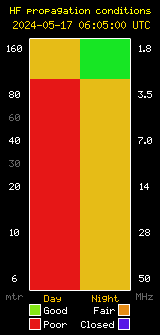General Club Meeting – May 19, 2023

Every year at our May general meeting we celebrate Old Timers Night. This allows us the opportunity to honor those with multiple decades of experience in amateur radio. Many of our more “seasoned” members have been SBARC members for most, if not all of their time as licensed hams. This is good opportunity to thank them for their service to the club and to the amateur radio community in general. Also this month we are going to watch a slide show from Bill Theeringer W8PEY. He recently went on an Honor Flight trip to our nations capital. The Honor Flight organization is a non-profit that arranges FREE flights and tours to Washington DC for our armed forces veterans. Special activities are arranged for these groups to give them a day of honor for their service. From their website: Our mission is one of gratitude. For their service, sacrifice, and selflessness. Join us as we proudly celebrate America’s Veterans with a day of honor in our nation’s capital. Coincidentally, Bill also won the “Longest Licensed HAM” title at last years Old Timers Night. We have quite a few veterans in our membership and this should be interesting to them and everyone. This is an in person meeting and will also be available on Zoom and YouTube. SBARC General Club Meeting Friday, May 19, 2023 at 7:30 PM (Doors open at 7pm) Goleta Union School District Board Room 401 North Fairview Avenue in Goleta Zoom Details: Topic: SBARC General Club Meeting – May 19, 2023 Time: May 19, 2023 07:00 PM Pacific Time Join Zoom Meeting https://us02web.zoom.us/j/81903854789?pwd=eG9uWU5UOTNHVm9QN2dxeHR4WE9DQT09 Meeting ID: 819 0385 4789 – Passcode: 902783 Post expires at 11:00pm on Friday May 19th, 2023 but will still be available in the archives.










